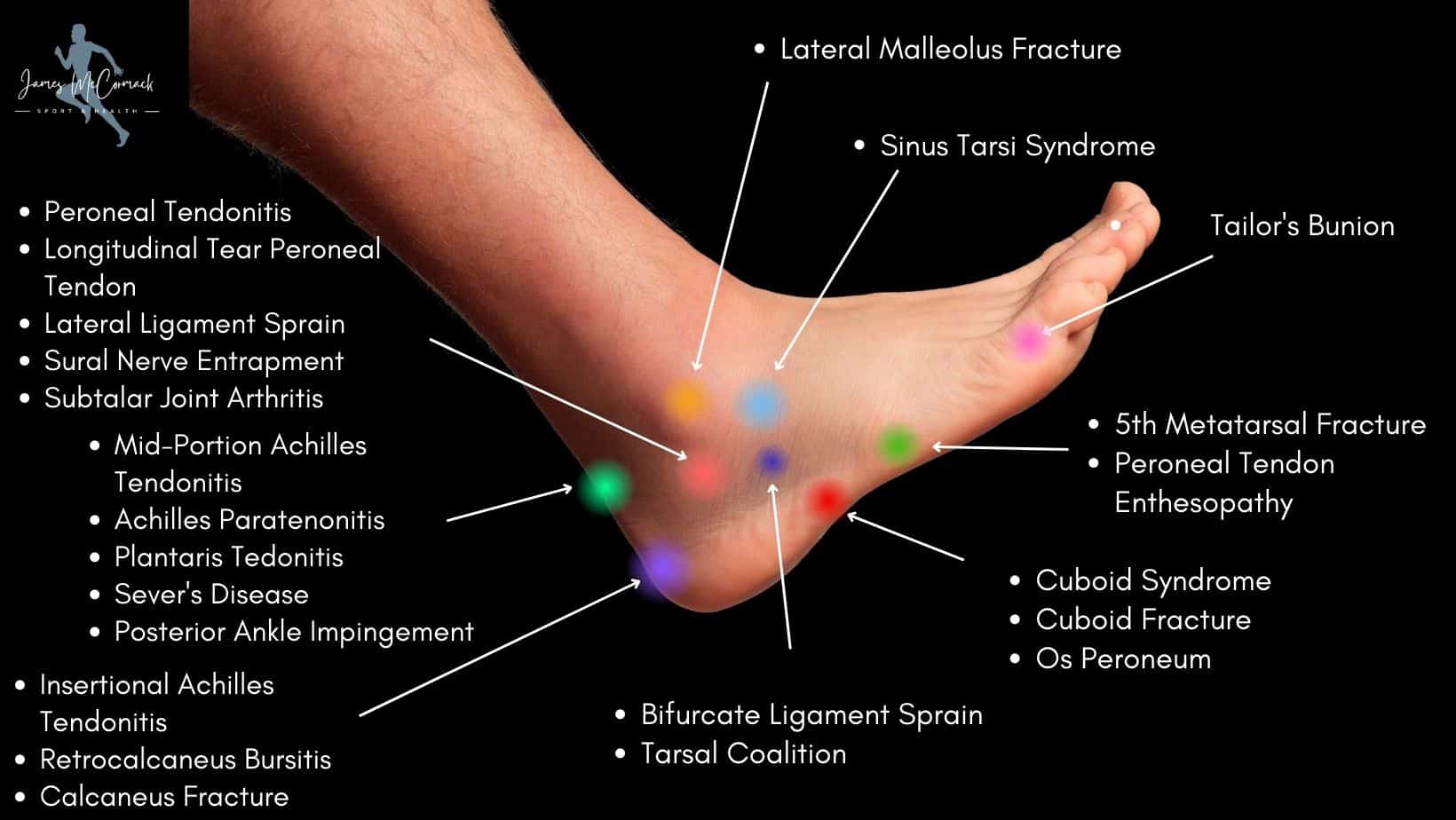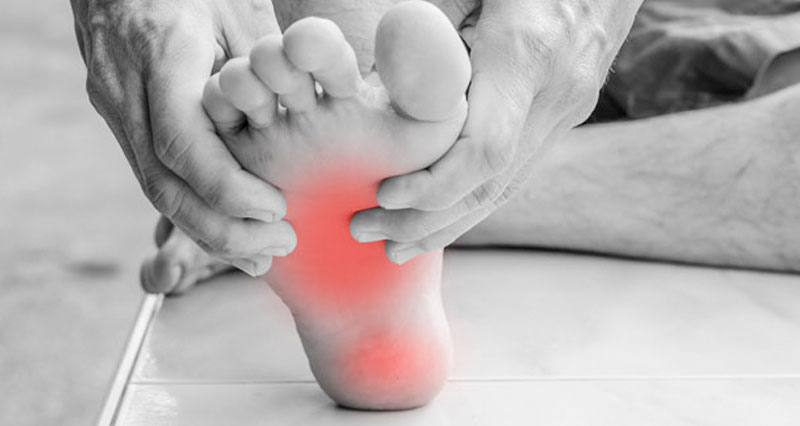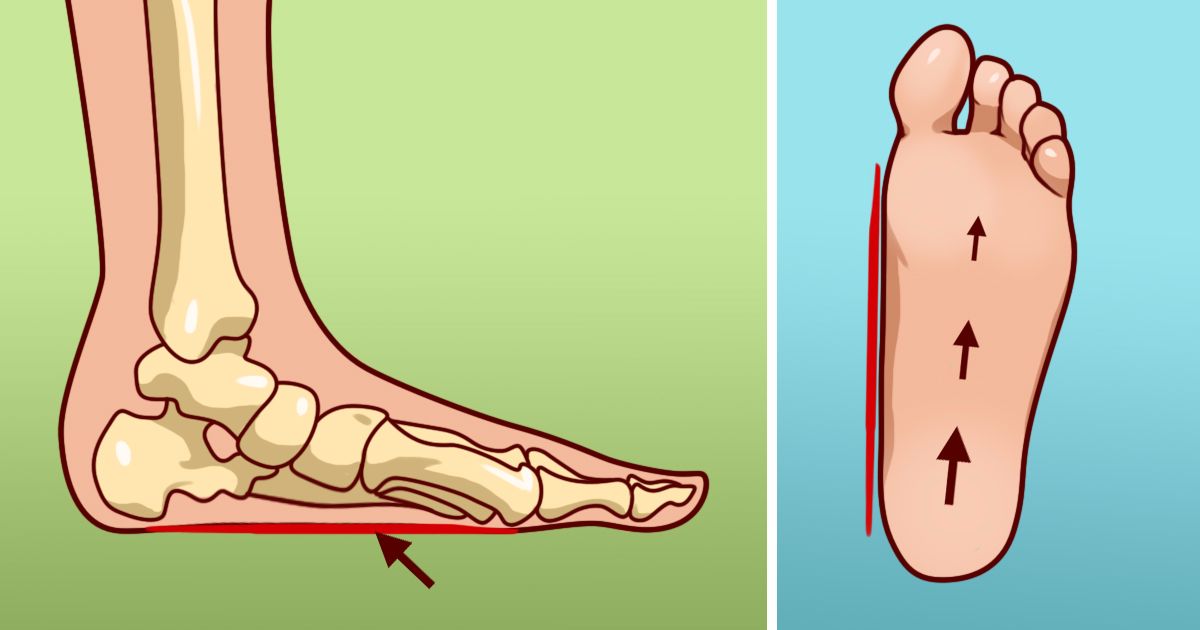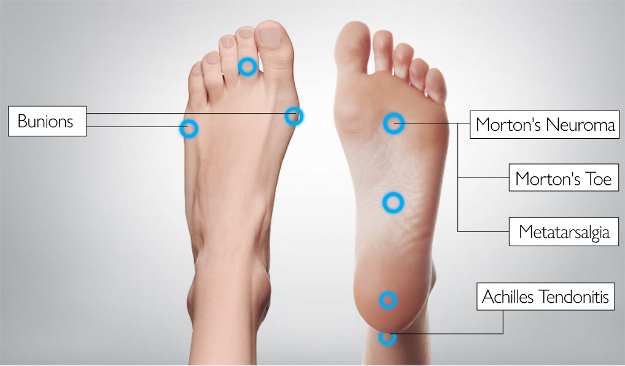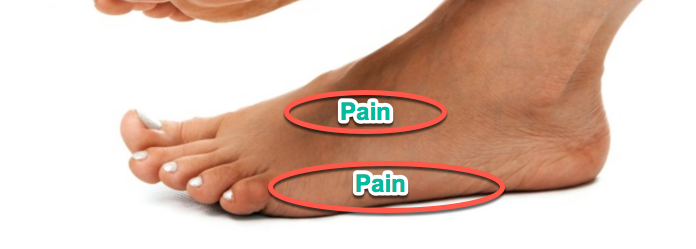Identifying the Source of Discomfort: Middle of the Foot
Midfoot pain, often described as discomfort or soreness in the middle region of the foot, can significantly impact one’s daily activities. The midfoot, also known as the tarsal region, consists of several small bones that work together to absorb shock and maintain stability during movement. When pain arises in this area, it can be challenging to perform routine tasks or engage in physical activities. This article aims to help those experiencing midfoot pain, specifically addressing the issue of “bottom of my foot hurts in the middle.”
Common Causes of Pain in the Middle of the Foot
Midfoot pain, particularly when the “bottom of my foot hurts in the middle,” can be attributed to various conditions. Plantar fasciitis, a common cause, involves inflammation of the thick band of tissue (plantar fascia) that runs along the bottom of the foot, connecting the heel bone to the toes. This inflammation can result in pain, primarily in the heel and arch areas, but may also manifest in the middle of the foot.
Stress fractures are another potential cause of midfoot pain. These tiny cracks in the bones of the foot often occur due to repetitive stress or overuse, common in high-impact activities such as running or jumping. Tendonitis, the inflammation or irritation of the tendons in the foot, can also lead to discomfort in the middle of the foot.
Other possible causes include tarsal tunnel syndrome, a compression of the posterior tibial nerve that runs through the tarsal tunnel; midtarsal joint sprains; or even systemic conditions like rheumatoid arthritis. Accurate self-diagnosis can be challenging, and consulting a medical professional is often necessary to determine the root cause of midfoot pain.
How to Treat Pain in the Middle of the Foot
Treating midfoot pain, such as when the “bottom of my foot hurts in the middle,” typically involves a combination of rest, ice, compression, and elevation (RICE) method, stretching exercises, and over-the-counter pain relievers.
The RICE method is an effective initial treatment for most midfoot pain. Resting the foot by avoiding activities that exacerbate the pain is crucial. Icing the affected area for 15 to 20 minutes, three to four times a day, can help reduce inflammation and pain. Compression with an elastic bandage or brace can provide additional support and reduce swelling, while elevating the foot above the heart level when sitting or lying down can further minimize swelling and discomfort.
Stretching exercises targeting the calf muscles, plantar fascia, and Achilles tendon can help alleviate midfoot pain. Gently stretching the foot and ankle several times a day can improve flexibility and reduce tension in the affected area.
Over-the-counter pain relievers like acetaminophen, ibuprofen, or naproxen can help manage pain and inflammation. However, it’s essential to follow the recommended dosage and consult a healthcare professional if pain persists or worsens.
Preventing Future Midfoot Pain
Preventing midfoot pain, such as when the “bottom of my foot hurts in the middle,” is essential for maintaining an active and fulfilling lifestyle. Adopting several preventive measures can help avoid recurring midfoot pain, including proper footwear, gradual increases in activity levels, and maintaining overall foot health.
Wearing appropriate footwear is crucial for midfoot pain prevention. Shoes should provide adequate arch support, cushioning, and stability to distribute pressure evenly across the foot. Custom orthotics or over-the-counter shoe inserts can further enhance support and alignment, particularly for individuals with flat feet or high arches.
Gradually increasing activity levels is another essential strategy for preventing midfoot pain. Rapidly increasing the intensity, duration, or frequency of physical activities can strain the foot, leading to discomfort or injury. Instead, progressively increasing activity levels over time allows the foot to adapt to new demands, reducing the risk of pain and injury.
Maintaining overall foot health is also vital for preventing midfoot pain. Regularly stretching the foot and ankle muscles can improve flexibility and reduce the risk of tension or strain. Strengthening exercises can help build endurance and resilience in the foot muscles, further reducing the likelihood of pain or injury. Additionally, maintaining a healthy weight can alleviate excess pressure on the feet, contributing to overall foot health and pain prevention.
When to Consult a Medical Professional
Understanding when to consult a medical professional is crucial for individuals experiencing midfoot pain, such as when the “bottom of my foot hurts in the middle.” While some cases of midfoot pain can be managed with self-care measures, specific warning signs indicate it’s time to seek professional help.
Persistent pain or swelling that doesn’t improve with rest, ice, compression, and elevation (RICE) method, stretching exercises, or over-the-counter pain relievers should prompt a consultation with a healthcare professional. Severe pain, difficulty walking, or an inability to bear weight on the affected foot are also signs that medical attention is necessary.
Additionally, individuals with a history of foot or ankle injuries, diabetes, or peripheral arterial disease should consult a medical professional if they experience midfoot pain. These conditions can increase the risk of complications or slow the healing process, making professional evaluation and treatment essential.
Lastly, if midfoot pain is accompanied by fever, redness, or warmth in the affected area, it may indicate an infection, requiring immediate medical attention. By recognizing these warning signs and consulting a medical professional when necessary, individuals can ensure proper diagnosis and treatment, promoting long-term foot health and pain relief.
Recommended Products for Midfoot Pain Relief
Selecting the right products can significantly alleviate midfoot pain, such as when the “bottom of my foot hurts in the middle.” This section reviews high-quality products designed to provide relief, helping readers make informed purchasing decisions.
Orthotic Inserts
Orthotic inserts are devices placed inside the shoe to provide additional support and cushioning. Designed to correct biomechanical issues, these inserts can help distribute pressure more evenly across the foot, reducing midfoot pain. Look for inserts with arch support, shock absorption, and a deep heel cup to ensure proper foot alignment and stability.
Supportive Shoes
Wearing supportive shoes is crucial for midfoot pain relief. Shoes with good arch support, cushioning, and stability can help distribute pressure evenly across the foot, reducing strain on the midfoot. Opt for shoes with a firm heel counter, a roomy toe box, and sufficient flexibility in the forefoot. Brands specializing in supportive footwear, such as New Balance, ASICS, or Brooks, are excellent choices for individuals experiencing midfoot pain.
Compression Sleeves
Compression sleeves can help alleviate midfoot pain by providing gentle pressure to the affected area, improving circulation, and reducing inflammation. Look for sleeves designed specifically for the foot and ankle, ensuring a snug fit without restricting movement. Brands like Plantar Fasciitis Night Splint or PowerStep Pinnacle Orthotic Arch Support Sleeve offer high-quality compression sleeves suitable for midfoot pain relief.
Expert Opinions and Scientific Research on Midfoot Pain
Understanding the expert opinions and scientific research related to midfoot pain, such as when the “bottom of my foot hurts in the middle,” can provide valuable insights and enhance the credibility of this article. Numerous studies and professional opinions support various treatment methods and preventive measures for midfoot pain.
According to a study published in the Journal of Foot and Ankle Research, custom orthotic devices can significantly reduce midfoot pain by improving foot alignment and reducing abnormal motion. This research supports the use of orthotic inserts as an effective treatment option for midfoot pain.
Another study in the Journal of Athletic Training found that implementing a comprehensive stretching and strengthening program can help prevent midfoot pain in individuals with a history of plantar fasciitis. This research emphasizes the importance of preventive measures, such as maintaining flexibility and strength in the foot and ankle muscles.
Expert opinions also support the use of supportive footwear and gradual increases in activity levels to prevent midfoot pain. The American Podiatric Medical Association recommends wearing shoes with good arch support, cushioning, and stability to distribute pressure evenly across the foot. Additionally, the American College of Sports Medicine advises increasing activity levels gradually to allow the body to adapt to new demands and reduce the risk of injury.
Incorporating these expert opinions and scientific research findings into the article can help readers better understand the causes, treatments, and preventive measures for midfoot pain. By presenting accurate and up-to-date information, this article can empower readers to make informed decisions about their health and well-being.
Living a Pain-Free Life: Midfoot Pain Management Strategies
Effective midfoot pain management strategies can help individuals find relief and maintain an active, fulfilling lifestyle. By combining various treatments, preventive measures, and lifestyle adjustments, readers can take control of their health and reduce the impact of midfoot pain on their daily lives.
First, incorporating the RICE method (rest, ice, compression, and elevation) can help alleviate acute midfoot pain. Resting the affected foot, applying ice for 15-20 minutes several times a day, using compression wraps or sleeves, and elevating the foot above the heart level can reduce inflammation and promote healing.
Second, implementing a consistent stretching and strengthening routine can help manage midfoot pain. Focus on exercises that target the calf muscles, plantar fascia, and foot intrinsic muscles. These exercises can improve flexibility, increase strength, and reduce the risk of future pain episodes. Consult a physical therapist or healthcare professional for personalized exercise recommendations based on your specific condition.
Third, maintaining a healthy weight can help alleviate midfoot pain by reducing excess pressure on the foot. Incorporating a balanced diet, rich in fruits, vegetables, lean proteins, and whole grains, can support overall foot health and contribute to weight management.
Lastly, regularly monitoring and managing midfoot pain can help prevent it from becoming a chronic issue. Keep track of pain levels, triggers, and alleviating factors to identify patterns and adjust your treatment plan accordingly. By staying proactive and informed, individuals can effectively manage midfoot pain and enjoy an active, fulfilling lifestyle.


